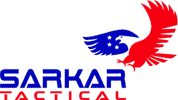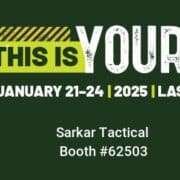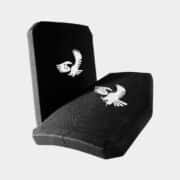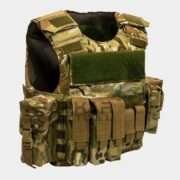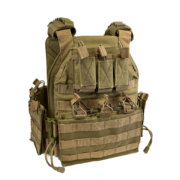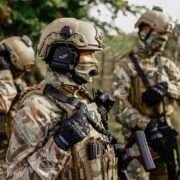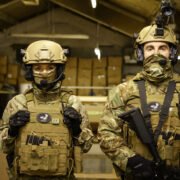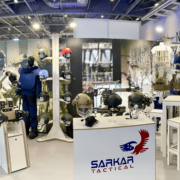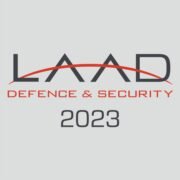Sarkar Tactical Returns to The SHOT Show® 2025
Sarkar Tactical is excited to announce its return to SHOT Show® 2025, the premier global event for defense, tactical gear, and shooting sports. Taking place in Las Vegas, Nevada, this renowned event gathers manufacturers, suppliers, retailers, military personnel, and enthusiasts to explore the cutting edge of the industry. Meet Sarkar Tactical at Booth #62503 *MADE IN USA* At Booth #62503, Sarkar Tactical will unveil its latest advancements in ballistic protection and tactical solutions. Highlights include: Athena – Body Armour for Women Designed by women, for women, Athena combines tailored comfort with industry-leading protection. Ares Tactical Helmet Range A lightweight and innovative helmet designed for military professionals and first responders. US-Made Kevlar Helmets Manufactured in Texas using 100% US materials, this line offers affordability, lightness, and excellent Backface Deformation (BFD) results. Soft and Hard Ballistic Armour Featuring the most advanced protective equipment, including new designs undergoing rigorous NIJ Standard 0101.07 certification. Why Sarkar Tactical Leads the Industry Sarkar Tactical is at the forefront of addressing modern security challenges with cutting-edge, accessible solutions. As threats grow more complex, our mission remains clear: to empower organizations with innovative tools that prioritize safety, precision, and performance. The SHOT Show® Advantage This dynamic event fosters collaboration and inspires innovation, offering Sarkar Tactical a unique platform to engage with industry leaders, government entities, and enthusiasts. At our booth, attendees can experience our immersive product displays, ask questions, and discover how Sarkar Tactical can meet their operational needs. Exclusive One-on-One Demos Don’t miss the chance to explore our groundbreaking solutions! Book a personalized product demonstration by securing your spot here. Join Sarkar Tactical at Booth #62503 to discover the future of tactical gear and ballistic innovation. For more information, visit sarkartactical.com. See you in Las Vegas! Making Armor Great Again! Book Appointment
What are the Different Levels of Body Armor: NIJ Protection Levels
Learn what the different levels of body armor are. Find out what each level of NIJ protection is and what it is used for in this guide from Sarkar Tactical.
What are Bulletproof Vests Made Of?
Explore the materials and technology that make bulletproof vests resistant to ballistic threats with the latest guide from our expert team at Sarkar Tactical.
How to set up a Plate Carrier: Step-by-step set up Guide
Follow this full step-by-step guide on how a plate carrier is set up. From the set-up for each operation, to the correct plate level required.
The Full Guide to Plate Carriers
Explore this useful resource to find out what a plate carrier is, what they are used for and how they work. From the experts at Sarkar Tactical.
What is Tactical Gear?
Explore this useful resource to find out everything you need to know about tactical gear and what it is used for from the experts at Sarkar Tactical.
Our Full Guide to Protective Armor
Explore this useful resource to find out everything you need to know about protective and ballistic armor. View the full guide from Sarkar Tactical.
SARKAR TACTICAL AT DSEI LONDON 2023
This year, Sarkar Tactical partnered with Reamda for the DSEI London exhibition 2023. With a bespoke stand and furniture, we curated an interactive and engaging stand, allowing visitors so hold and touch the equipment, whilst seeing both of the ROV’s on a terrain-like platform. DSEI was a massive success, where the Sarkar Staff had the pleasure of meeting new and existing clientele, government officials and similar companies within the industry. A highlight for the company was the participation of our Head of Engineering and Compliance , Matt Young, on the Made in Britain Innovation and Growth panel, discussing manufacturing in the defense sector. To read Forecast International’s article discussing the session, follow the link here Our first time exhibiting at DSEI has been productive and advantageous. We look forward to seeing you all in 2025. https://sarkartactical.com/uk/wp-content/uploads/2023/09/Sarkar-Tactical-DSEI.mov
Partnership with Outreach Paramedics
At Sarkar Tactical, we understand the vital impact of our work and the lifesaving equipment we provide.
